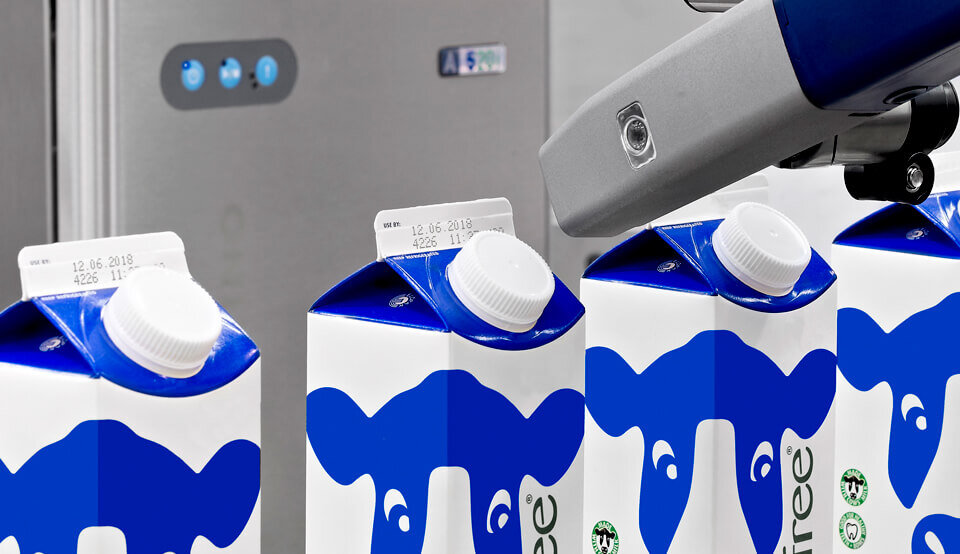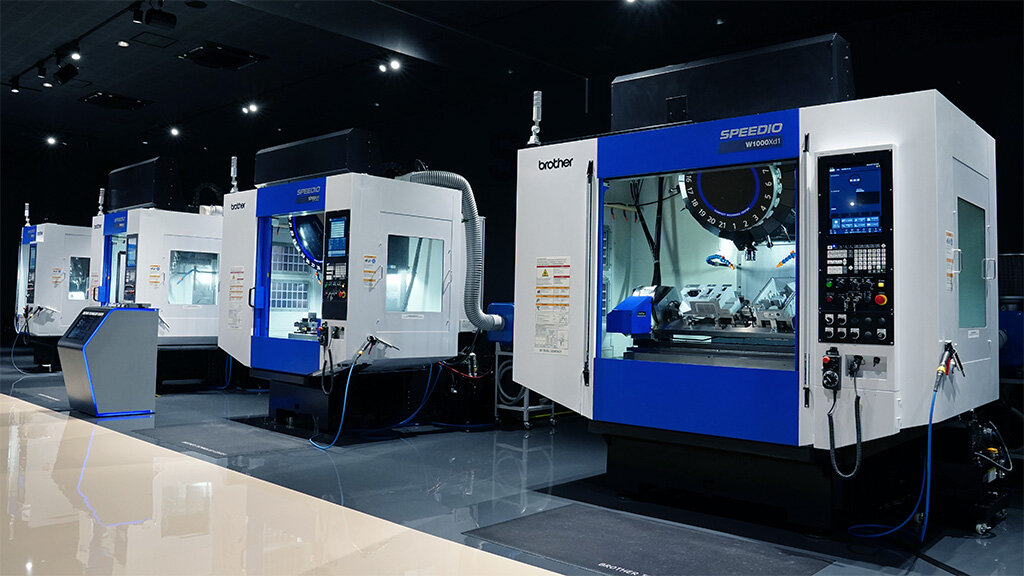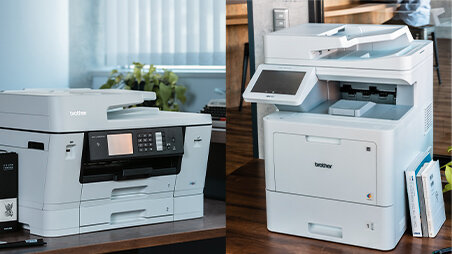

Hear your ideas.
Reducing Waste Through Traceability
Contribution of industrial printers, coding and marking equipment
Controlling the quality of products, reducing waste, and increasing resource efficiency are challenges for many companies. Traceability is the process of tracing the flow of products: when and where they were made and where they were sold or disposed of. Brother supports quality control by enabling traceability through special industrial printers, coding and marking equipment, by our group company, Domino Printing Sciences.
Coding and marking equipment roles

Coding refers to assigning product information (codes) following certain regulations. Marking refers to applying symbols to products. Coding and marking devices print expiration dates, serial numbers, and other information on the sides and bottoms of food packages to provide various types of information about products.
Reducing food loss from production to consumption

The printing of best-before and expiration dates helps consumers know when to eat their food while it's still delicious and helps retailers reduce prices to sell products before the expiration date. For food manufacturers, when a problem is found in the production line, they can refer to the printed information, such as the date of production or the manufacturing plants, to identify and recall specific foods that are problems. Traceability through coding and marking leads to a reduction in food loss in all processes from production to consumption.
Minimizing waste, even in industrial parts
There is also a demand for traceability in the industrial field. Automobile parts, electronic parts, construction materials, etc., have manufacturing lot numbers and serial numbers directly printed onto the parts, so they can find when and where the parts were manufactured. When there is a problem found in a particular manufacturing process, problem parts can be identified, collected, and replaced, minimizing waste, even after they are used in products or houses.
SDGs goal 8, “decent work and economic growth”, including target 8.4 which aims to "improve global resource efficiency in consumption and production,” while promoting sustainable economic growth and full and productive employment. SDGs goal 12 aims to create "responsible consumption and production" including target 12.3 which aims to "halve per capita global food waste at the retail and consumer level, and reduce food losses along production and supply chains" to ensure sustainable production and consumption patterns. Coding and marking equipment from Domino Printing Science, a Brother Group company, contributes to the realization of the SDGs by improving resource efficiency, reducing food loss and product waste through traceability.

Share this article on social media

Learn about this initiative's SDGs
In ”SDGs at a Glance,” the 17 goals of the SDGs are explained in easy-to-understand illustrations. Click on the goal you are interested in, and you can read about it in under a minute. Let's take a look at the SDG goals featured in this article.
Related Topics

















